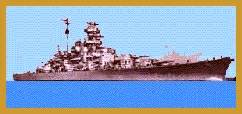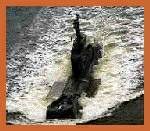|
PinkMonkey Online Study Guide-World History
11.3 The Course of World War I
With the news of the murder of Archduke Francis
Ferdinand of Austria and his wife, Austria decided to crush Serbia
with the support of Germany. An ultimatum was served to Serbia by
Austria, which made certain demands on her. When Serbia refused
to comply with these demands, Austria declared war with the defaulting
country on July 20, 1914. The next day, orders of mobilization
were issued by Germany and also by Russia. Germany declared war
on France on August 3, 1914. After Germany’s invasion of Belgium
on August 4, 1914, England declared war against Germany.
During the early phase of the war, which included the Battle of Verdun, events moved in favor of the Allies. In early 1915, Italy and Rumania joined the Allies.
The year 1917 marked a turning point in the course of the war. After being defeated by the Germans, the Russians were highly demoralized. In 1917, they revolted against the Czar and established a Republic. The Treaty of Brest-Litovsk was signed with Germany, by the new government in March 1918.

Exhibit 11.2
A German Battleship
The war at sea was also in favor of the Allies. However Germany’s position grew stronger with the collapse of Russia. Germany began to manufacture ‘U-boats’ on a large scale and began a submarine warfare.

Exhibit 11.3
A picture of a German Submarine
The German submarines then began to destroy the
British battleships as well as the American merchant ships. Hence
the U.S.A. declared war against Germany on April 6, 1971. U.S.A.’s
entry into the war turned the war in favor of the Allies. Finally
Germany surrendered in November 1918, on the basis of the Fourteen
Points, announced by President Woodrow Wilson of the U.S.A.
An armistice was signed on November 11, 1918.
The Paris Peace Conference was held in January 1919 in order to end the war. However only the representatives of the victorious states attended the Peace Conference. The defeated states were not represented. Among the most important members of the Conference were the "Big Four" namely Clemenceau, the Prime Minister of France (known as the ‘Tiger’ of France), Lloyd George, the Prime Minister of England,
Woodrow Wilson, the President of the U.S.A.;
and Orlando of Italy. The delegates at the council, were
assisted by an army of secretaries, historians, geographers, financiers
and other experts.
Finally five treaties were drawn up by the delegates, namely,
- Versailles with Germany,
- St. Germain with Austria,
- Trianon with Hungary,
- Nevilly with Bulgaria, and
- Sevres with Turkey.
Since the defeated states were forced to sign these treaties, it was also known as a "dictated peace."
[next page]
|
Index
11.0 Introduction
11.1 Novel Features of World War I
11.2 Causes of World War I
11.3 The Course of World War I
11.4
Consequences of World War I
11.5 Dates & Events
11.6 Points to Remember
Chapter
12
|